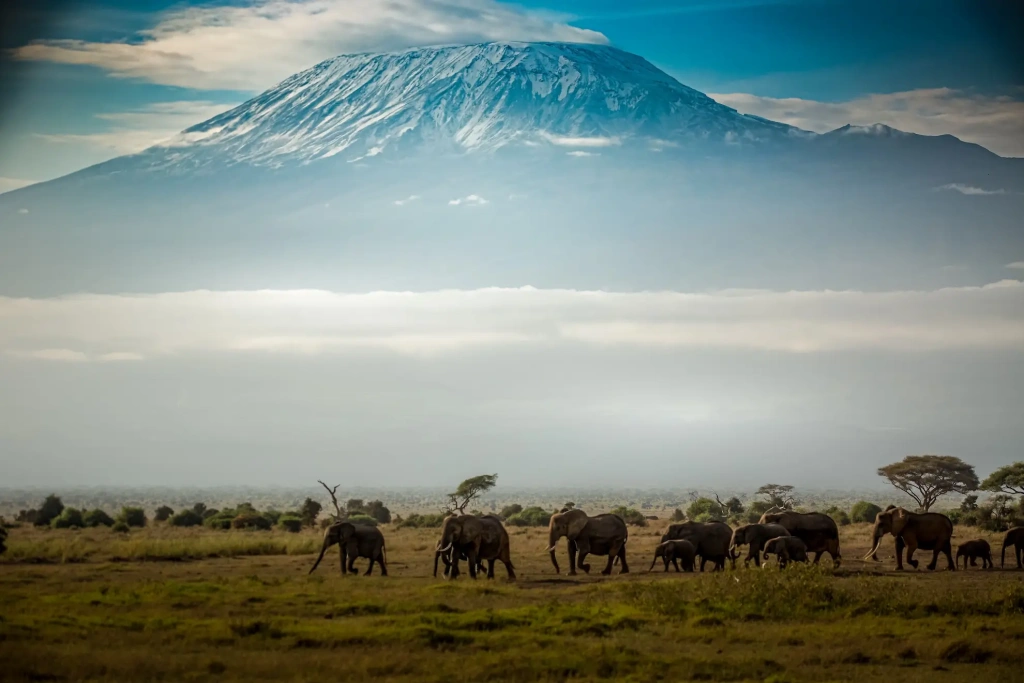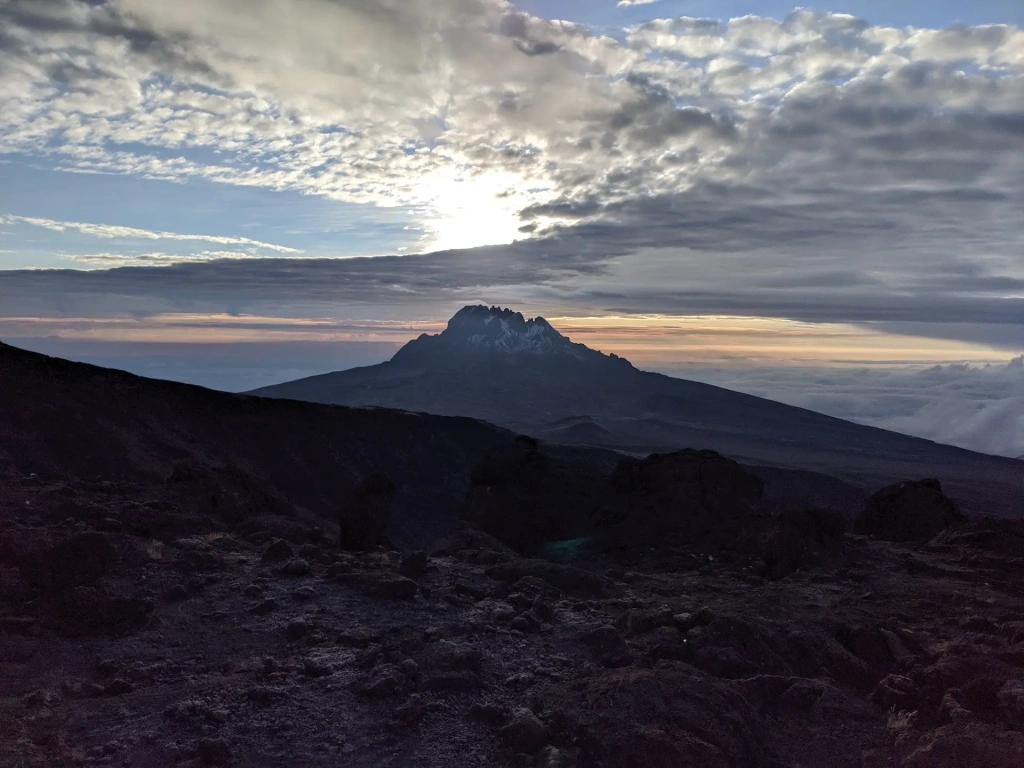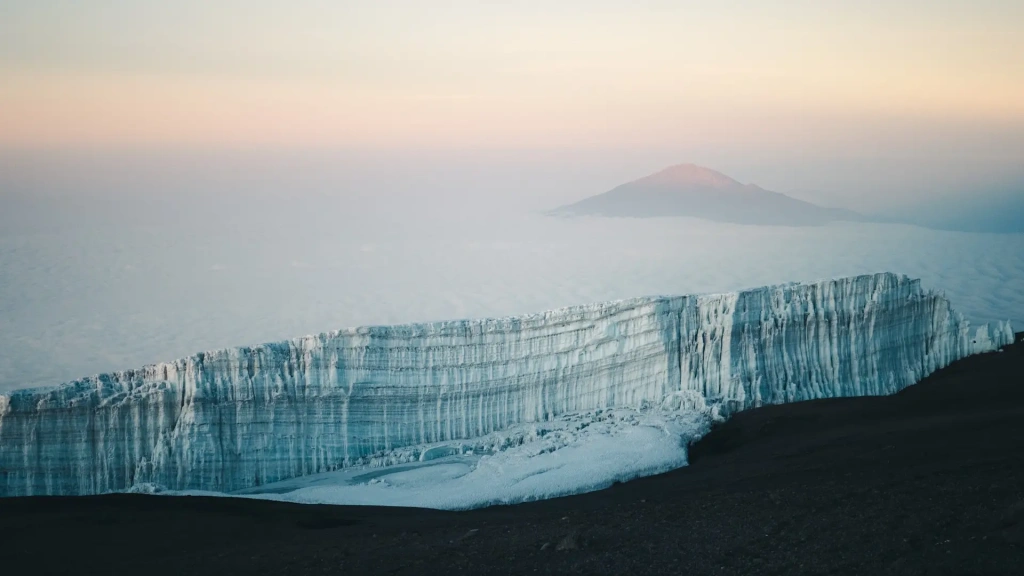Kilimanjaro is a legendary volcanic massif crowned by Uhuru Peak – the highest point in Africa, soaring to 5,895 meters (19,341 feet). This article by Altezza Travel explores what makes the summit of Kilimanjaro unique, the early ascents, and the journey through jungles to the disappearing glaciers.
Geology of Mount Kilimanjaro summit
Kilimanjaro is a dormant volcano believed to have formed about one million years ago, according to the Geological Society of London. It is located in the East African Rift, a crack in the Earth’s crust. Through this rift, magma rose to the surface and created a chain of volcanoes, the largest of which is the Kilimanjaro massif.
The mountain has a complex structure – it’s actually three merged volcanoes. The first, Shira, is the oldest and lowest. It has long been extinct and partially collapsed, forming the Shira Plateau on the western slope. The second, Mawenzi, rises to 5,149 meters (16,893 feet). And the third, the central volcano Kibo, is the youngest and tallest. The highest point on Kilimanjaro – Uhuru Peak – is located on the rim of Kibo’s crater.
The last major eruption of Kibo is believed to have occurred hundreds of thousands of years ago, but volcanologists still do not classify it as extinct. Signs of volcanic activity remain near the summit: cracks emitting hot gases and sulfur deposits inside the crater. Overall, the mountain is “asleep,” and predictions suggest it is unlikely to awaken in the coming millennia.
Kilimanjaro’s three craters are not its only unique feature. Climbing from base to summit is essentially a journey from the tropics to the Arctic, as the mountain spans five climate zones: cultivated land, rainforest, heath and moorland, alpine desert, and arctic zone. The latter is especially captivating.
Kilimanjaro summit’s glaciers
Kilimanjaro’s glaciers and summit snowcap have long been iconic. The gleaming white ice against the African sky has inspired travelers and writers alike – think of Ernest Hemingway’s The Snows of Kilimanjaro.
Unfortunately, these famous snows are melting rapidly. According to glaciologist and climate expert Douglas Hardy from the University of Massachusetts Amherst (USA), glacier areas at Kilimanjaro summit have shrunk by 91% since they were first mapped in 1912. In the early 20th century, Kibo’s summit was almost entirely covered in glaciers – today, only scattered remnants remain. NASA’s Earth Observatory notes that scientists now generally agree the question is not if Kilimanjaro’s ice will vanish, but when. Some projections suggest this could happen by 2060.
Today, two large ice fields remain at the summit: the Northern and Southern Ice Fields, located on either side of the Kibo crater. The glaciers are cracking – in 2012, researchers recorded the Northern Ice Field splitting into two isolated parts.
For today’s traveler, this means there may only be a few decades left to witness the legendary snows of Kilimanjaro.
First ascents of Kilimanjaro
The first successful ascent of Africa’s highest point was made on October 5, 1889, by German geographer Hans Meyer and Austrian mountaineer Ludwig Purtscheller. They reached the rim of Kibo’s crater and became the first documented summiteers.
Thirty-eight years after Meyer’s ascent, Uhuru Peak was first climbed by a woman – 22-year-old Australian Sheila MacDonald – on July 31, 1927. Interestingly, she hadn’t planned to climb Kilimanjaro, though she was an experienced mountaineer. She came to Africa for a safari and to visit her cousin, Captain Archie Ritchie, Kenya’s chief game warden at the time.
However, aboard the ship, Sheila met William K. West, a member of the Alpine Club, whose vice president happened to be her father. West mentioned he was heading to Africa to climb Kilimanjaro and invited her to join. We tell the full story of this incredible journey in our article “The First Woman on Kilimanjaro.”
In the 20th century, Kilimanjaro became a symbol of adventure. Its relative accessibility and fame as “Africa’s highest point” made it popular among travelers from all over the world – a status it still holds today. And unlike in Meyer’s day, the mountain is no longer reserved for a select few – almost anyone can visit Tanzania and climb Kilimanjaro.
All content on Altezza Travel is created with expert insights and thorough research, in line with our Editorial Policy.
Want to know more about Tanzania adventures?
Get in touch with our team! We've explored all the top destinations across Tanzania. Our Kilimanjaro-based adventure consultants are ready to share tips and help you plan your unforgettable journey.



















